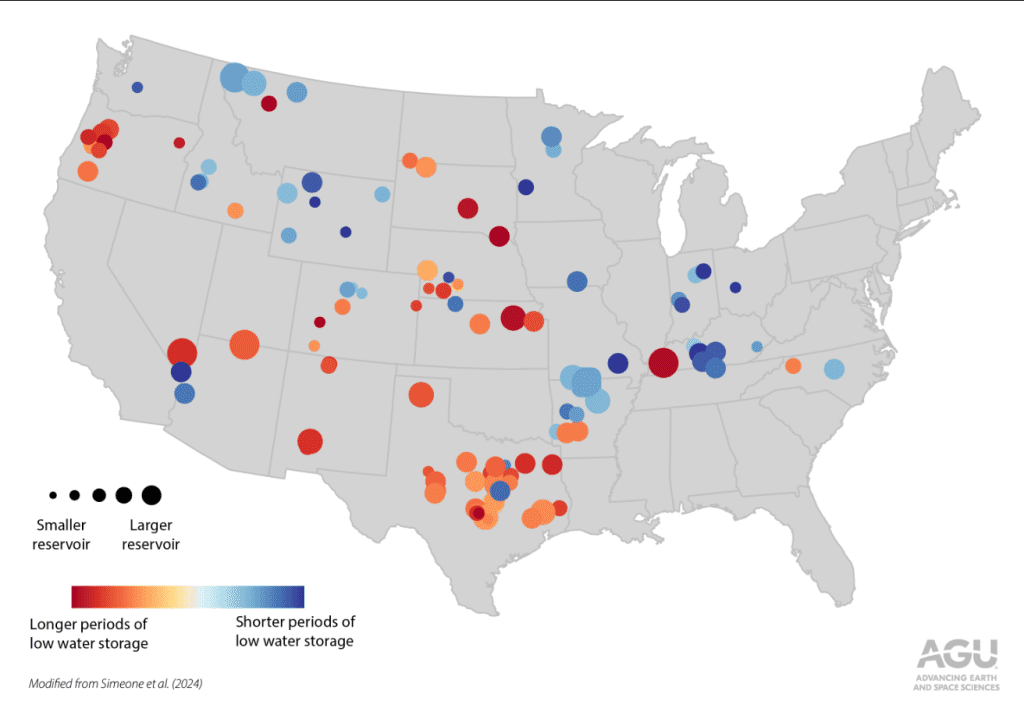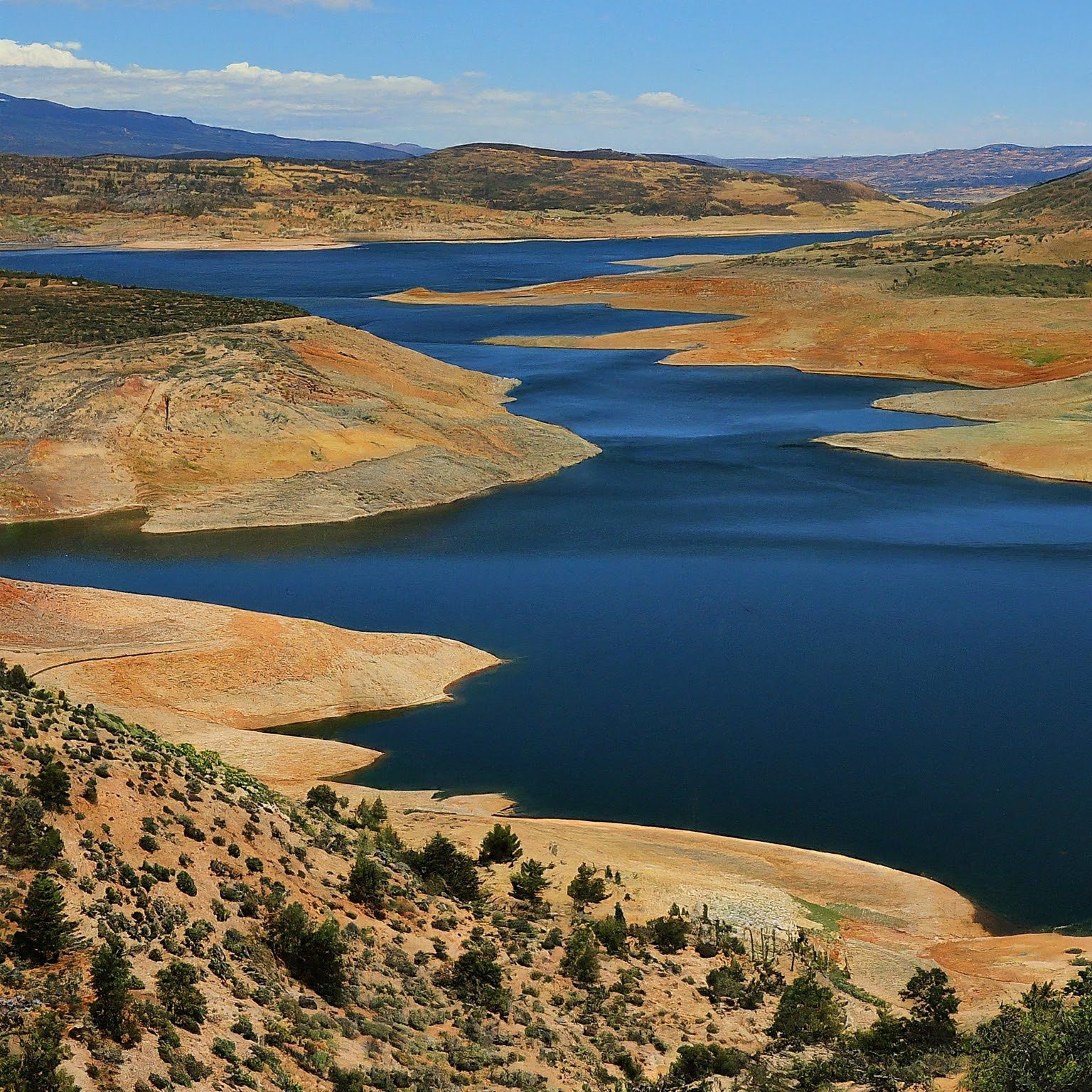- Periods of low reservoir storage are becoming longer and more severe in the western and central U.S.
- Maximum annual storage is decreasing across the U.S., worsened by storage losses from sedimentation.
- Longer low-storage periods indicate decreased reservoir reliability in the face of climate change.
- Western and central U.S. reservoirs with over-year storage are experiencing the longest, most severe periods of low storage.
- These changes highlight increasing reservoir vulnerability and challenges in meeting water demands.
August 30, 2024 — Hydrological drought, or a lack of water in water systems, poses a significant challenge to water resource management. Reservoirs play a vital role in mitigating the effects of drought by storing water and regulating downstream flows. However, recent research published in Geophysical Research Letters reveals that drought significantly impacts reservoir storage across the conterminous United States (CONUS).
reveals that drought significantly impacts reservoir storage across the conterminous United States (CONUS).
Low-Storage Anomalies: A Growing Concern.
The study, led by a team of hydrologists, employed a novel approach to identify periods of unusually low reservoir storage. These periods, referred to as “low-storage anomalies,” were assessed in 250 major reservoirs across CONUS. The research found that the maximum amount of water stored in reservoirs is decreasing, and periods of low storage are becoming longer, more severe, and more variable. This trend is particularly pronounced in western and central CONUS reservoirs and reservoirs designed for over-year storage (those that take more than a year to fill).
Declining Reservoir Reliability and Increasing Vulnerability.
The study’s findings suggest reservoir storage is becoming less reliable and more vulnerable to significant deviations from desired storage patterns. “Results suggest that reservoir storage has become less reliable and more vulnerable to larger deviations from desired storage patterns,” the researchers stated. These changes coincide with ongoing shifts in the hydroclimate of CONUS, including changing precipitation patterns and increased drought frequency and severity. Additionally, sedimentation, the buildup of sediment behind dams, further reduces available reservoir storage, exacerbating the problem.
researchers stated. These changes coincide with ongoing shifts in the hydroclimate of CONUS, including changing precipitation patterns and increased drought frequency and severity. Additionally, sedimentation, the buildup of sediment behind dams, further reduces available reservoir storage, exacerbating the problem.

 )
)Regional Variations in Low-Storage Anomalies.
The researchers also observed regional differences in low-storage anomaly patterns. Western and central CONUS reservoirs, especially those with over-year storage, are experiencing longer and more severe periods of low storage. This is likely due to the more arid climate and greater variability in annual runoff in these regions. In contrast, eastern and coastal western reservoirs, primarily designed for within-year storage, tend to have shorter and less severe low-storage anomalies.
Implications for Water Management.
The study’s findings highlight the growing challenges of managing water resources in a changing climate. As reservoirs become less reliable and more vulnerable to drought, it may become increasingly difficult to meet water demands for various uses, including irrigation, recreation, hydroelectric power generation, and municipal water supply. “These results suggest these systems are becoming increasingly impacted by drought and that it may become increasingly challenging to meet all reservoir operation goals,” the researchers cautioned.
Future Outlook.
Projections of continued population growth and intensifying drought conditions, particularly in the western U.S., suggest that water management will become even more complex. The researchers emphasize the need for improved monitoring of reservoirs and the development of more consistent databases to better understand reservoir dynamics and the impacts of drought. “These improvements, paired with continued large-scale analyses of how reservoirs are changing across CONUS with nonstationarity in climate drivers, water use, and sedimentation, are essential to improve our understanding of reservoirs and impacts from drought,” they concluded.
Citation.
, , , , , , et al. (2024). Declining reservoir reliability and increasing reservoir vulnerability: Long-term observations reveal longer and more severe periods of low reservoir storage for major United States reservoirs. Geophysical Research Letters, 51, e2024GL109476. https://doi.org/10.1029/2024GL109476


Leave a Reply